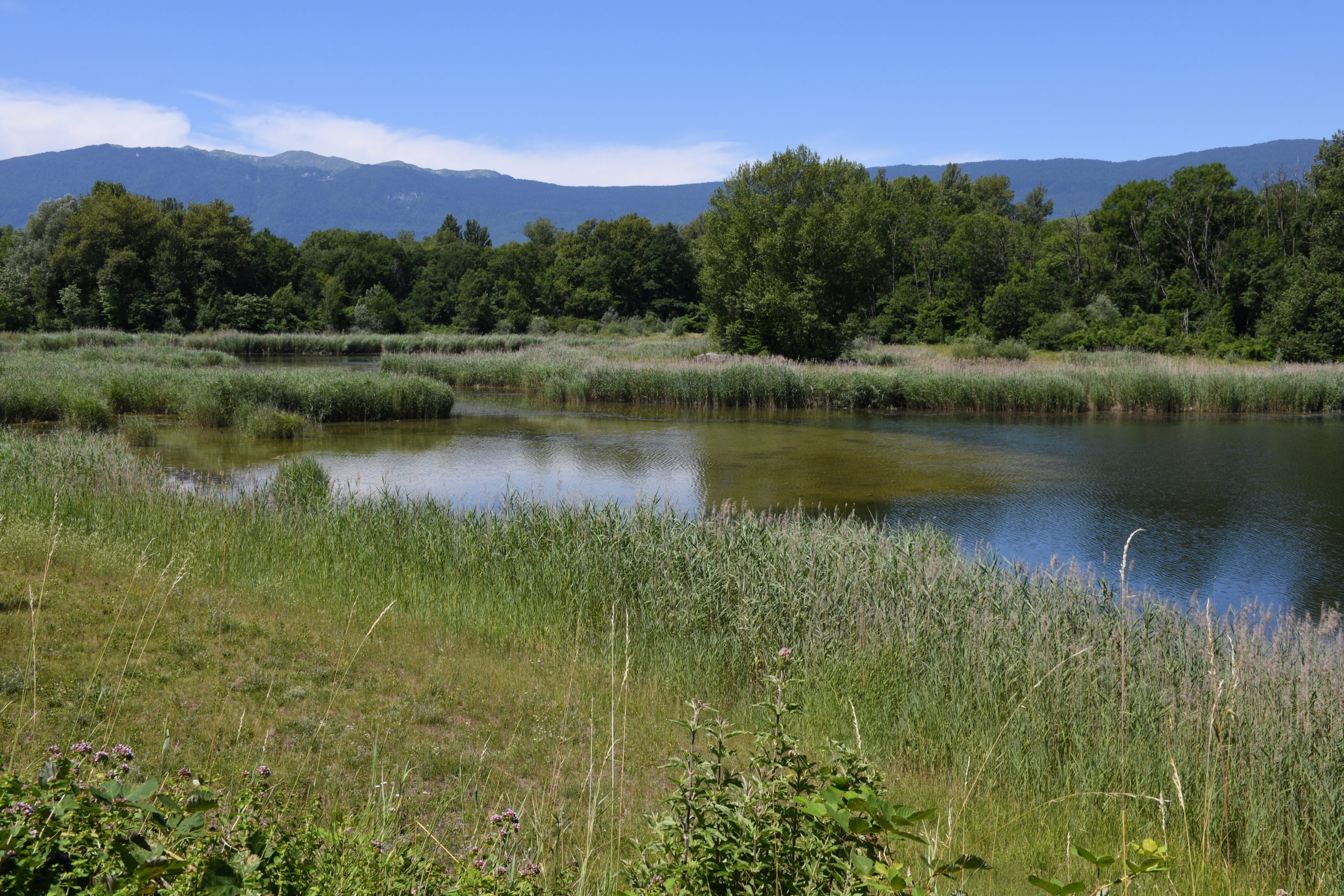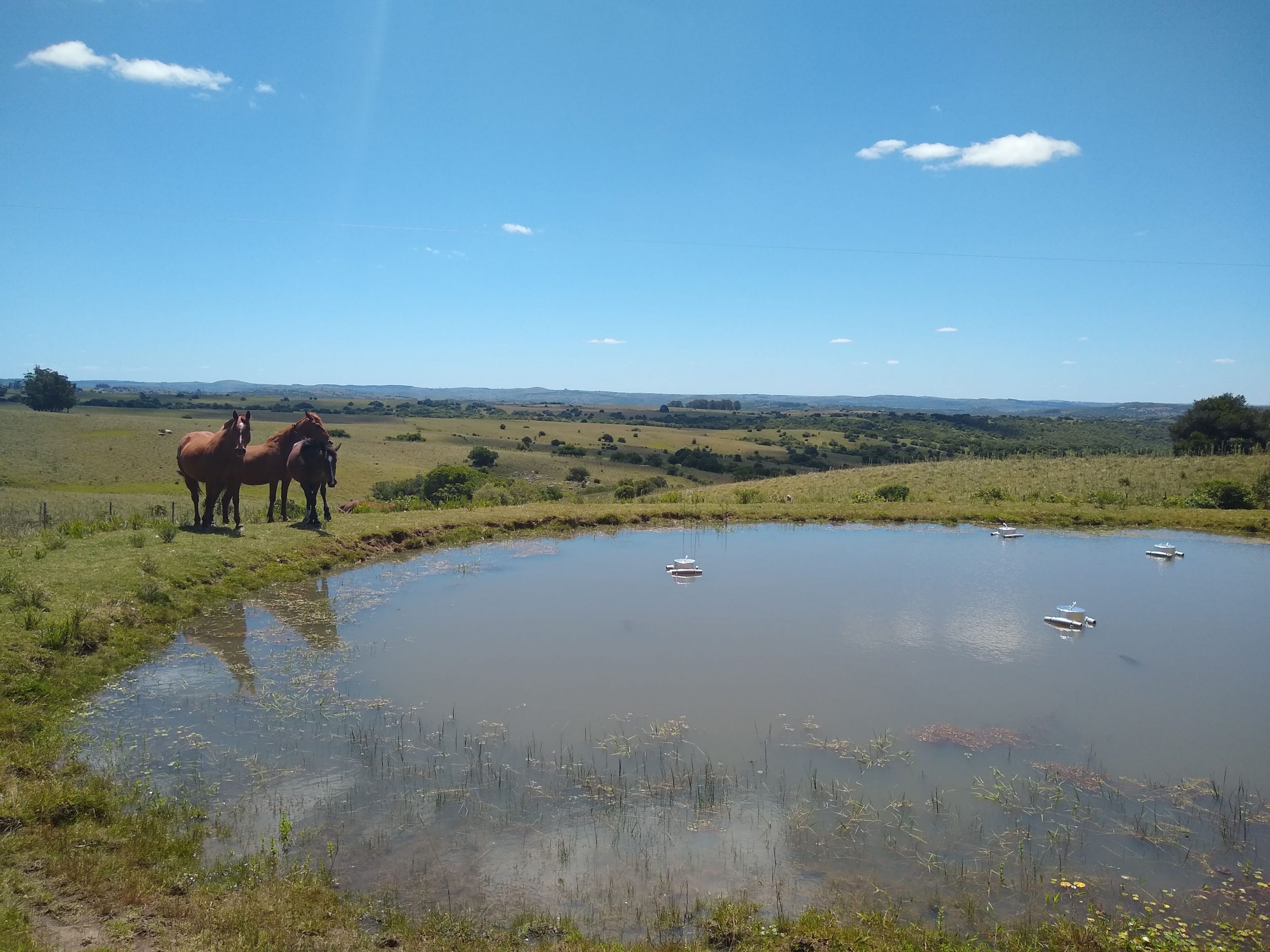Nature-based solutions (NBS), as ‘green infrastructure’, are increasingly gaining traction in academia and policy-making as a way to reconcile the objectives of enhancing biodiversity and addressing challenges facing society, These challenges include climate change adaptation and mitigation as well as human wellbeing.
The European Commission considers NBS as key to “achieve more sustainable and resilient societies” and is working to position the European Union (EU) as a global leader in the development implementation of associated projects. However, while NBS are helpful as a common denominator to get people talking about biodiversity and climate-friendly infrastructure, the vagueness of the concept can obscure the fact that not all ecosystems benefit equally from NBS. Afforestation programmes or green roofs and walls, for example, are commonly implemented NBS. Meanwhile, other ecosystems continue to deteriorate in quality and diminish in quantity.
Importantly for the PONDERFUL project, these include Europe’s ponds. In general ponds are ecosystems that are neglected in policy and practice and it is still relatively uncommon to use them as NBS.

Figure 1. Demosite in Geneva, Switzerland by Julie Fahy.
A group of PONDERFUL partners have analysed the policy framework of the EU, assessing what currently limits the implementation of ponds and landscapes of different types of ponds (pondscapes) as NBS.
The group is also identifying potential opportunities contained in this framework. For the policy analysis, the team of researchers from Uppsala University in Sweden and the Ecologic Institute in Germany extracted the key policy mechanisms from 38 policies from a wide range of policy areas and assigned them to seven different common categories of barriers and enabling factors for NBS implementation. These were: objectives & targets, legislation & regulations, management approaches & tools, institutional arrangements, stakeholder awareness & engagement, and knowledge development & transmission.
Importantly, these barriers and enabling factors do not take effect independently from each other, but are strongly interlinked. This means that, together, they represent opportunities and limitations for the implementation of a given ecosystem as NBS.
While results are still preliminary, there are strong indications for the following three key findings.
1. Oportunities at landscape scale – for some ecosystems
In the past, the EU has been accused of incentivising the use of NBS as piecemeal solutions but not encouraging a coherent landscape-wide network of infrastructure that would maximise benefits, especially those related to biodiversity enhancement. Instead, we find that the policies provide a variety of policy mechanisms that increase the opportunities for planning of NBS at landscape scale, as well as for ecosystems that can act as stepping stones to increase habitat connectivity.
Ponds are even specifically mentioned as ‘stepping stones’ in the Habitats Directive. However, the binding regulations concern mostly the enlargement and improvement of the Natura 2000 network of nature protection areas. They shall help to protect and restore the habitats and species contained in the annexes of the Birds and Habitats Directives. While proposed binding restoration targets and linked financing mechanisms are designed to strengthen the Natura 2000 network and its habitats, the political support for ecosystems not listed in the aforementioned annexes, such as ponds, misses ‘legal teeth’. Therefore, unfortunately, for most ponds, only very limited opportunities arise from the push to enhance habitat connectivity through NBS. An exception are Mediterranean temporary ponds that are listed as Natura 2000 habitats of interest.
2. Climate change adaptation and mitigation
The focus on existing or potentially protected habitats extends to another major NBS-related focus of the EU policy framework – contributing to climate change adaptation and mitigation through NBS.
Specifically, the proposed binding restoration targets would require EU Member States to report on the expected adaptation and mitigation co-benefits of the protection and restoration measures for habitats under the Birds and Habitats Directives.
The EU also pursues enhancing carbon-rich areas more generally. For example, the new Common Agricultural Policy (CAP) prohibits the conversion of peatlands and wetlands to farmland from 2025 onwards, and will provide financial resources for their rewetting. In this context, ponds are, however, not specifically mentioned as prioritised ecosystems. They could though be considered as Natural Water Retentions Measures for flood protection and drought resilience or as part of green infrastructure for wastewater treatment and reuse to reduce energy consumption, next to ensuring water security. The EU encourages such measures in, for example, the Floods Directive.
3. Local stakeholders’ ambition is still critical
While EU policies set an overarching framework for NBS implementation, they also leave up much to the discretion of lower-level authorities and even individual land owners.
For example, the CAP financially incentivises the joint implementation of biodiversity and climate-friendly measures. However, it does not mandate it or even put in place the arrangements to build the necessary capacities. The EU’s Research and Innovation policies, and more specifically Horizon Europe, could play a special role regarding which ecosystems will be implemented as NBS. Projects and missions under this policy could help local stakeholders to plan, design, and implement NBS – as well as contributing to their upscaling.
The research team looks forward to engaging with interested stakeholders on how to make use of existing policy opportunities for the implementation of ponds as NBS, as well as entering a dialogue with the European Commission on how to enlarge or create new opportunities for ponds in the EU’s policy framework. Additionally, the team is keen to assess the role of local policies and practices in the implementation of ponds as NBS in future research endeavours.
By Simon Otis Ryfisch (Uppsala University)

